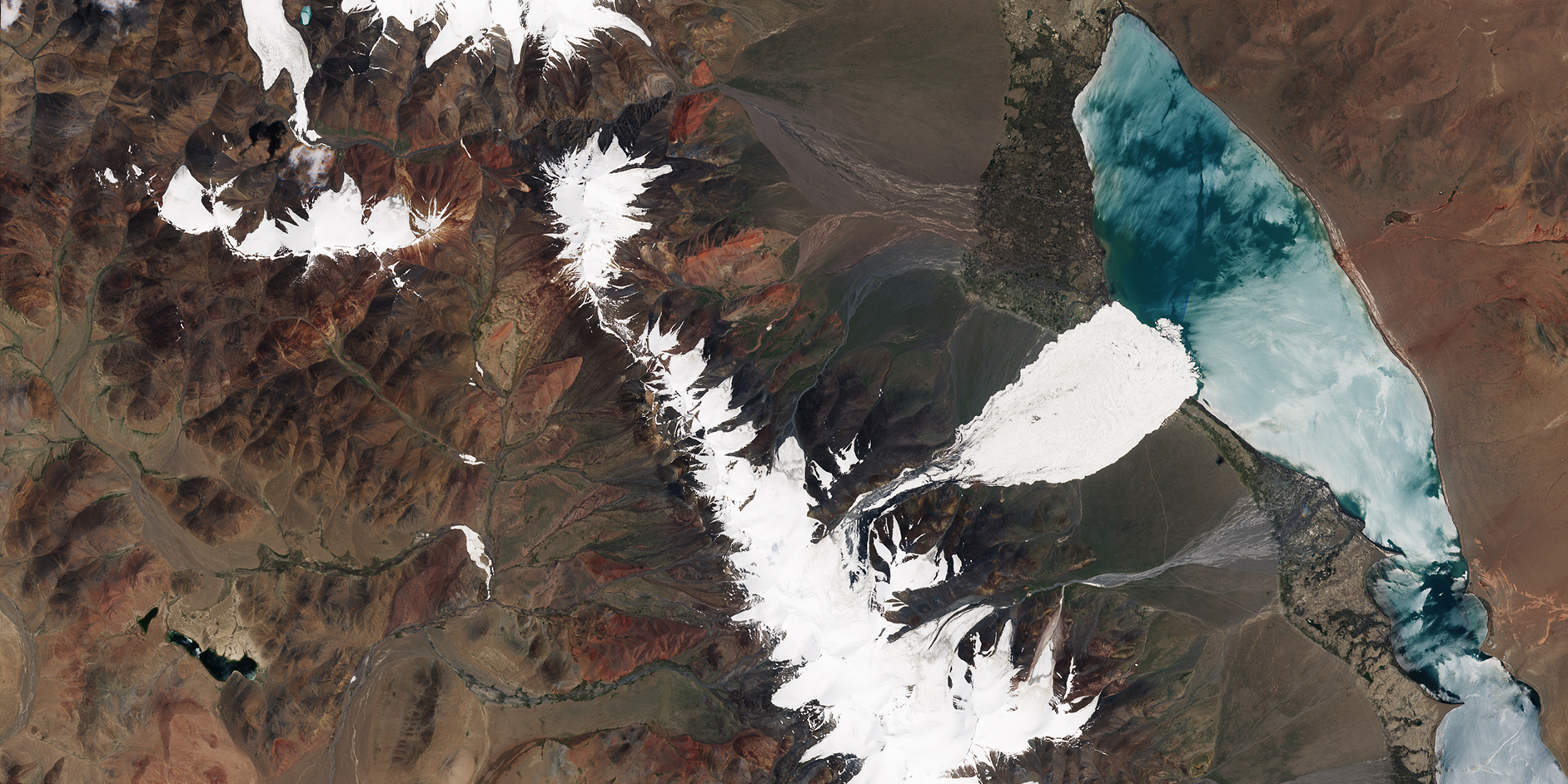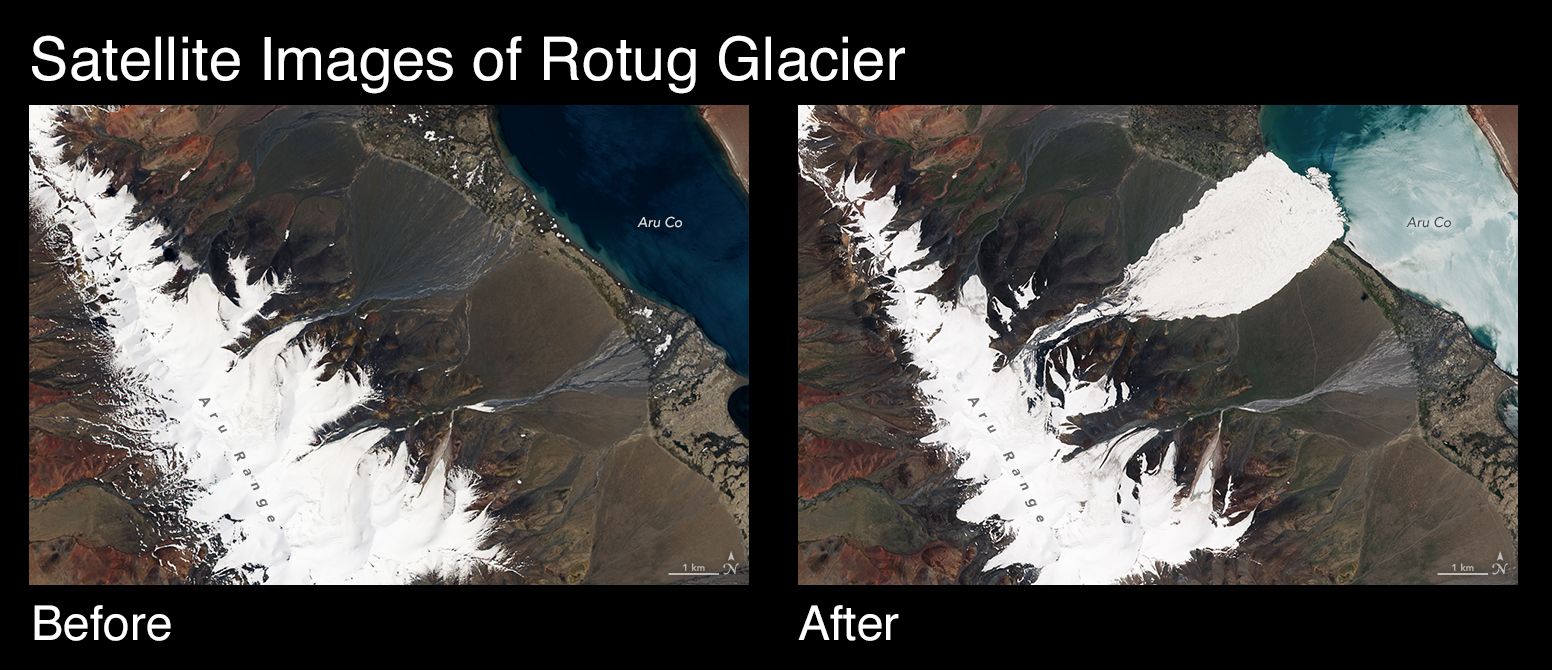

On July 17, 130 million cubic yards of ice and rock suddenly let go from a glacier in Tibet, hurtling down six-tenths of a mile and killing nine herders along with 350 sheep and 110 yaks. Scientists were baffled. Now, by examining satellite images before and after the event, they think it is an example of a rare glacial surge, when a glacier moves at 10 to 100 times its normal speed. Some researchers believe that climate change at high elevations can trigger such surges.
“It doesn’t make sense,” said Tian Lide, a glaciologist at the Chinese Academy of Sciences’ Institute of Tibetan Plateau Research (ITPR) in Beijing, who runs a research station in Rutog. Most avalanches occur on slopes of 25 to 45 degrees, but the Rutog avalanche, as this event is known, started from a flat area some 17,000 to 20,000 feet above sea level. When it came to rest, it covered an area of nearly 3.8 square miles to a depth of almost 100 feet. The only other event of comparable size was the 2002 collapse of the Kolka Glacier in the Caucasus. That avalanche killed 140 people.
An entire tongue of the Rutog glacier in Northwest Tibet collapsed at once. Lide noted that the glacier came down with such force that it widened the gully it came to rest in. Two different satellites captured before-and-after pictures of the area. NASA’s Operational Land Imager acquired an image on June 24, just about a month before the avalanche. The European Space Agency’s Sentinel-2 satellite captured an image of the debris field on July 21, days after. The pre-collapse imagery revealed that the glacier was already showing signs of change.
Glacial surges can be caused by meltwater at the base of the glacier, which essentially lubricates the surface it flows over. These types of surges can have a sudden onset and a very high flow rate. Many surge-type glaciers are found in Western Tibet.
Researchers from Moscow State University and the University Center for Engineering Geodynamics and Monitoring in Moscow have investigated the Kolka avalanche on the ground. Glacial surges are not new there; events dating back to at least 1902 are known. They found striations in the moraine rocks, which they’d never seen before.
“Moraine rocks are not scraped by the glacier because they move with it,” Dmitry Petrakov, a geologist at Moscow State University, said. “But at Kolka, the collapse happened so fast that the ice mass must have simply flown over the moraine, producing striations several millimeters deep in minutes.”
They found that the avalanche moved with tremendous speed, perhaps up to 112 miles per hour. They concluded that it was a surge event.
https://www.youtube.com/watch?v=FH_vQPWZtrk
A year after the Kolka collapse, the researchers still found the area unstable. In the days following the Rutog avalanche, cracks occurred in nearby glaciers. Temperatures in the Tibetan plateau have risen 0.4 degrees Celsius per decade, twice the global average. One-tenth of the permafrost has melted in just the past decade. Rapidly melting glaciers have added to the number of lakes by 14 percent since 1970 and 80 percent of existing lakes have grown, flooding towns and pastures. In addition, precipitation in the area has increased 12 percent since 1960.
EcoWatch reported Aug. 26 on the issues facing this area, known as the “Third Pole.” The Himalayas and Tibetan Plateau hold the largest mass of ice on Earth after the polar regions. The loss of these glaciers threatens the water supply for 1 billion people in China, India and Tibet, Nepal, Bhutan and Southeast Asia.
Mount Everest climbers may one day climb ice-free https://t.co/8rTp6XI25o via @EcoWatch #climatechange pic.twitter.com/sMCOeuDREu
— Climate Council (@climatecouncil) September 1, 2016
In response to the Rutog avalanche, China Radio International reported, “Experts believed that the icefall is a result of global warming, which has caused melting and cracking of the glaciers.”
Those killed in the Rutog avalanche were residents of Dungru village in Rutog county in Southwest China’s Tibet autonomous region.

 233k
233k  41k
41k  Subscribe
Subscribe 
